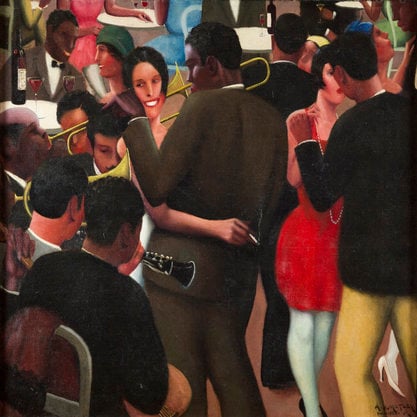Article
Foxtrot By C. Cook, Susan
Article
The foxtrot emerged circa 1914, most likely within African American practices, as a variation on the older duple meter one step popular with dancers since the early years of the twentieth century. The name foxtrot suggests a relationship with earlier trotting animal dances such as the turkey trot or grizzly bear and led to claims that it was the “invention” of the comic Harry Fox. While the one step, at its simplest, consisted of an easy walking step corresponding to each beat of 2/4 meter syncopated up tempo music, foxtrotters varied this duple meter walk through a combination of two slow and four quick steps danced over four beats of music. This combination, along with later variants such as two slow and two quick steps, proved to be extraordinarily versatile as dancers responded to popular music in a variety of tempi and corresponding emotional affects. The foxtrot’s versatility and up-to-date modernity ensured a transatlantic popularity that extended well into the rock ’n’ roll era and remains central to current practices of professional and amateur ballroom dance and Dansport.


